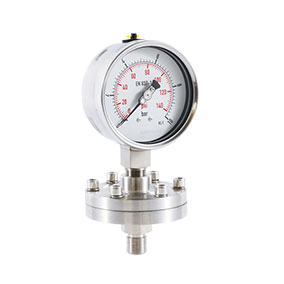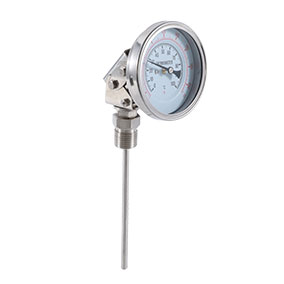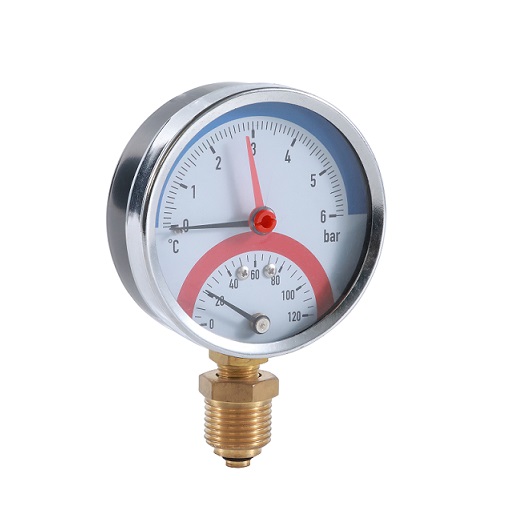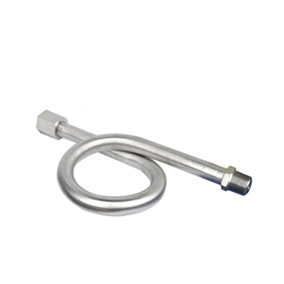Principe de fonctionnement principal du thermomètre bimétallique
Bimetallic thermometer is an instrument that uses the expansion difference of two different metals under temperature changes to measure temperature. It has a simple structure and is easy to operate. It is widely used in industry, chemistry, food and other fields. Because it does not require power and has high stability, bimetallic thermometer has become an important tool for temperature monitoring in many occasions. Today, our article will also introduce the working principle, structural characteristics and application fields of bimetallic thermometer in detail to help readers deeply understand its working mechanism and practical application.
Working principle:
The core principle of bimetallic thermometer is based on the principle of "thermal expansion". Bimetallic thermometer is made of two different metal sheets (usually copper, steel, aluminum, etc.) welded to each other with different expansion coefficients. When the temperature changes, the two metal sheets expand to different degrees, causing the entire bimetallic strip to bend or deform. This is because each metal has a different thermal expansion coefficient. When the temperature rises, the metal with a larger expansion coefficient will expand more, causing the bimetallic strip to bend.
The degree of bending of the bimetallic strip is proportional to the change in temperature, and the angle of bending can be displayed by the connected pointer and dial. When the temperature rises, the bimetallic strip bends and the pointer moves accordingly; when the temperature drops, the bimetallic strip returns to its original shape and the pointer returns to a lower temperature value. Through this simple physical principle, the bimetallic thermometer can accurately measure the temperature.
Structural composition:
The structure of a bimetallic type thermometer generally includes three main parts: a bimetallic element, a pointer and a dial.
Bimetallic element: It is composed of two different metal materials (such as copper and steel) with different expansion coefficients. They are welded together to form a curved element. The bending degree of the metal sheet changes with temperature, thereby driving the movement of the pointer.
Pointer: Through the deformation of the bimetallic strip, the pointer will indicate the corresponding temperature on the dial.
Dial: There is an accurate temperature scale on the dial, and the number indicated by the pointer is the current temperature. Usually, the dial is designed with different temperature ranges according to different application fields.
Application field:
Bimetallic thermometers are widely used in various places that require temperature monitoring due to their simple structure, low cost and strong durability. Common application areas include:
Industrial field: used for temperature measurement of equipment such as boilers, pipelines, engines, etc.
Food industry: used to monitor temperature during food processing to ensure food quality and safety.
Household appliances: used for temperature control equipment such as electric water heaters, ovens, etc.
Chemical and pharmaceutical industries: used to monitor the temperature of equipment such as reactors and storage tanks to ensure the safety and stability of the production process.
Industrial bimetal thermometers play an important role in many industries with their simple and reliable working principles. It does not require power and can operate stably in extreme environments, making it an ideal choice for temperature measurement in industries such as industry, food and chemistry. An Hui Exact focuses on providing customers with high-quality bimetallic thermometers, and has won wide market recognition with its excellent technology and product quality. Whether it is accuracy or durability, we are committed to always providing users with the best temperature measurement solutions.




